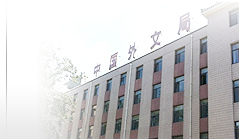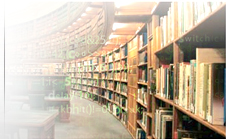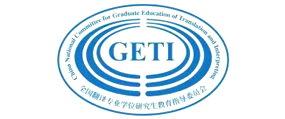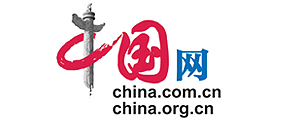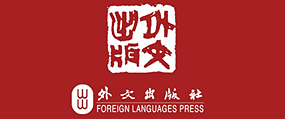目录
特别报道与时俱进,务实创新,开创译协工作的新局面——中国译协第六次会员代表大会暨新中国翻译事业60年论坛纪实 / 5
译论研究
形式的复活:从诗学的角度反思文学翻译 / 王东风 6
论陌生化翻译 / 陈琳13
译史纵横
宗教典籍汉译对于小说汉译的借镜作用 / 方开瑞21
中国翻译界60年回眸
新中国科学翻译60年 / 黎难秋27
建国以来中国翻译理论著作出版评述 / 文军33
书刊评介
当代美洲翻译理论研究的新方向—— 根茨勒新著《美洲的翻译与身份认同:翻译理论的新方向》评介 / 李红满38
学术争鸣
范式转换抑或视角转变——与谢天振教授商榷 / 吕俊 侯向群41
深切缅怀杨宪益先生
平静若水淡如烟 ——深切缅怀翻译界泰斗杨宪益先生 / 郭晓勇46
翻译硕士专业学位教育论坛
翻译硕士专业学位教育的发展趋势与要求 / 黄友义49
加强翻译硕士教育工作适应翻译产业发展需要 / 唐继卫50
关于翻译硕士专业学位教育的几点思考 / 许钧52
对专业翻译教学建构的思考——现状、问题和对策 / 柴明54
译技探讨
从词义连贯、隐喻连贯与意象聚焦看诗歌意境之“出”——以李商隐诗《夜雨寄北》及其英译为例 / 朱纯深 文 崔英 译57
标语翻译的文本分析和翻译策略——以上海世博会标语的翻译为例 / 李德超 王克非65
对外传播符号转换与重要词语翻译 / 王平兴71
基于自建英汉翻译语料库的翻译明晰化研究 / 戴光荣 肖忠华76
自学之友
英译汉:FARMHOUSE / 孙建成 译81
翻译导读:翻译托马斯·威尔和杰拉尔丁·威尔作品的体会 / 孙建成82
汉译英:最珍贵的东西是免费的 / 郑立群 译85
翻译导读:语篇翻译之四要素 / 郑立群86
第二十二届韩素音青年翻译奖竞赛
竞赛原文及竞赛规则 / 88/封底
完善翻译竞赛成就优秀人才——“韩素音青年翻译奖”竞赛回望与期望 / 叶小宝91
词语选译
气候环保类词语选译 / 94
英文摘要 / 95
信息广角
本刊稿约(48)本刊邮购信息(96)其它(26、84、87)
CONTENTS
Resurrection of Forms: Rethinking Literary Translation from a Poetic Perspective / Wang Dongfeng 6On Defamiliarizing Translation / Chen Lin 13
China,s Tradition of Religious Translation as a Mirror for Its Fiction Translation / Fang Kairui 21
A Review of Book-length Studies of Translation Published in China over the Past 60 Years / Wen Jun 33
Paradigm Shift or Perspective Switch: A Response to Prof. Xie Tianzhen / Lü Jun & Hou Xiangqun 41
Imagery Focalization and the Evocation of a Poetic World / Zhu Chunshen 57
A Textual and Strategic Analysis of Slogan Translation: With the C-E Rendering of Shanghai World Expo Slogans as an Exemplar / Li Dechao & Wang Kefei 65
E/C Translation Practice: FARMHOUSE / Sun Jiancheng 81
C/E Translation Practice:The Most Precious Things Cost Nothing / Zheng Liqun 85
Han Suyin Award for Young Translators (2010) / 88
Abstracts of Major Papers in This Issue / 95
English Abstracts of Major Papers in This Issue
Resurrection of Forms: Rethinking Literary Translation from a Poetic Perspectiveby Wang Dongfeng (Sun Yat-sen University, Guangzhou, China) p. 6
Abstract: In the history of translation both in China and in the West, formal features of the ST have long been downplayed in favor of the so-called “free translation.” If unchecked, such a tendency could result in a destruction of many poetically loaded expressions in the original and thus cause a fatal loss of poetic values in translation. Applying the principles of poetics to a reconception of the translation-related values and significance of forms, this paper calls for a reversal of the anti-formalist trend in literary translation.
Key words: poetics; form; literary translation
On Defamiliarizing Translation
by Chen Lin (XiangtanUniversity, Xiangtan, China) p. 13
Abstract: Defamiliarizing translation is a means for the pursuit of newness and unfamiliarity in literary translation. By retaining distinctive features of literariness in theme, technique and imagery in the translated literature, and through the preservation of the foreign elements of the source text and the mixing of the foreign elements with the indigenous features of the target language, this approach renders a target text strange, enabling the target audience to re-perceive of the familiar anew. As a formal mechanism, defamiliarizing translation contributes to the realization of literariness in translation and helps to account for the often flamboyant and deviant translations by authors- or poets-cum-translators.
Key words: literary translation; defamiliarizing translation; alienization; hybridization; foreignness
China's Tradition of Religious Translation as a Mirror for Its Fiction Translation
by Fang Kairui(Guangdong University of Foreign Studies, Guangzhou, China) p. 21
Abstract: In its long history, China,s religious translation has developed its own unique models and strategies by redefining culture-specific purposes and recontextualizing target readership. Following a brief review of these models and strategies, this paper argues that in terms of textual simplification, value transference and readership modification, China,s religious translation ought to serve as an exemplary model for its fiction translation.
Key words: China; religious translation; model; strategy; fiction translation; Chinese
Paradigm Shift or Perspective Switch: A Response to Prof. Xie Tianzhen
by Lü Jun (Nanjing Normal University, Nanjing, China) & Hou Xiangqun (Nanjing University of Science & Technology Information, Nanjing, China) p. 41
Abstract: This paper is a reply to Prof. Xie Tianzhen,s paper “The Study of Translation per se versus Translation Studies.” Led by a survey which shows that the Chinese scholars of translation, unlike their western counterparts, remain at issue with one another over the status of the linguistic approach, the two authors argue that linguistics should always be the core in translation studies, since language is the carrier of all the messages, the cultural and the aesthetic ones included. They further maintain that the cultural messages conveyed in translation can be deciphered only through an internal study of relevant texts rather than an external study of extra-textual factors. And they contend in conclusion that to grasp the true meaning of the “cultural turn” in translation studies, one has to distinguish among three modes of development, namely, paradigm shift, problematic modeling and perspective switch. What has taken place in the cultural turn is the the last of this trio.
Key words: counter-criticism; cultural turn; linguistics; paradigmatic shift; perspective switch
Imagery Focalization and the Evocation of a Poetic World
by Zhu Chunshen(City University of Hong Kong, China) Translated by Cui Ying(City University of Hong Kong, China) p. 57
Abstract: This paper discusses how a poetic world is cunjured up in literary translation. Following a brief overview of sense and sense-making with reference to cohesion, coherence and intertextuality, it offers a word-by-word close analysis of a classical Chinese poem, Ye Yu Ji Bei by Li Shangyin, charting the text,s semantic coherence and mapping its metaphorical coherence in terms of ontological metaphors. Using the poem as a case example, the paper examines (1) the way to evoke a poetic world sustained by both semantic and metaphorical coherence, (2) the focalization of imagery through an interplay among individual images, and (3) the significance of a focal image for the profiling, and by extension the translation, of a poetic text.
Key words: Li Shangyin; poetry translation; coherence; imagery focalization; text analysis
A Textual and Strategic Analysis of Slogan Translation: With the C-E Rendering of Shanghai World Expo Slogans as an Exemplar
by Li Dechao (The Hongkong Polytechnic University, China) & Wang Kefei (Beijing Foreign Studies University, China) p. 65
Abstract: The functionalist view of translation pioneered by Katharina Reiss maintains that free translation, with its emphasis on retaining the effects rather than the form of the original, is the most suitable strategy for slogan translation. Yet more and more contemporary slogans are stylistically motivated to achieve both the appellative and the expressive function, the latter of which cannot be reproduced in the target text by using the free translation strategy alone. With the translation of the Shanghai World Expo,s slogans as a case in point, this article proposes a new translation typology featuring finer distinctions of translation strategies and argues that different translation strategies should be adopted for rendering different types of slogans.
Key words: slogan; translation; textual analysis; translation strategy

